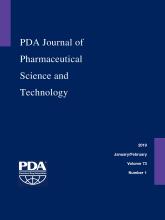Abstract
Flexible medical devices are primarily made of plasticized polyvinyl chloride (PVC). In recent times, to avoid undesired migration of the PVC plasticizers, ethyl vinyl acetate (EVA) and polypropylene (PP) has replaced PVC. Nevertheless, other additives are necessary to generate useful polymeric materials. Metallic species present in such additives can also leach out into the infusion solutions. The migration of barium (Ba), cadmium (Cd), lead (Pb), tin (Sn), and zinc (Zn) from devices made from PVC, EVA, and PP was evaluated. Bags and infusion sets were decomposed and their metallic contents analyzed. Glucose, NaCl, and Tween 80 were assessed as extraction media. These solutions were stored in PVC, EVA, and PP bags, heat-sterilized, and stored for 8 months at room temperature. Aliquots were taken before and after sterilization and then once per month to determine the contents of the metals. Commercial glucose and NaCl infusions were analyzed by taking aliquots of the solutions from the bags and from the administration set after their administration to patients. The three polymers contained the five metals. Ba was found in the highest concentration in all samples, with a mean of 8.0 mg/kg in PVC, 4.2 mg/kg in EVA, and 4.7 mg/kg in PP samples. Despite this, the only element that migrated into the glucose, NaCl, and Tween 80 solutions was Zn. The same result was found for the commercial glucose and NaCl infusions. Moreover, the Zn concentration in the administration sets was on average 52% higher than that found in the bags.
LAY ABSTRACT: Flexible medical devices for infusions and artificial nutrition are made of plastics, such as polyvinyl chloride (PVC), ethyl vinyl acetate (EVA), and polypropylene (PP). These polymers contain additives necessary to generate useful materials. Metallic species present in these additives can leach out into the infusion solutions and come into contact with patients. To assess the risk of patient exposure to these metals, we evaluated the migration behavior of barium (Ba), cadmium (Cd), lead (Pb), tin (Sn), and zinc (Zn) from devices made from PVC, EVA, and PP. Bags and infusion sets were analyzed. Glucose, NaCl, and Tween 80 were investigated as extraction media. The three polymers contained the five metals. Ba was found in the highest concentration in all samples. Despite this, the only element that migrated into the glucose, NaCl, and Tween 80 solutions was Zn.
- © PDA, Inc. 2019
PDA members receive access to all articles published in the current year and previous volume year. Institutional subscribers received access to all content. Log in below to receive access to this article if you are either of these.
If you are neither or you are a PDA member trying to access an article outside of your membership license, then you must purchase access to this article (below). If you do not have a username or password for JPST, you will be required to create an account prior to purchasing.
Full issue PDFs are for PDA members only.
Note to pda.org users
The PDA and PDA bookstore websites (www.pda.org and www.pda.org/bookstore) are separate websites from the PDA JPST website. When you first join PDA, your initial UserID and Password are sent to HighWirePress to create your PDA JPST account. Subsequent UserrID and Password changes required at the PDA websites will not pass on to PDA JPST and vice versa. If you forget your PDA JPST UserID and/or Password, you can request help to retrieve UserID and reset Password below.






